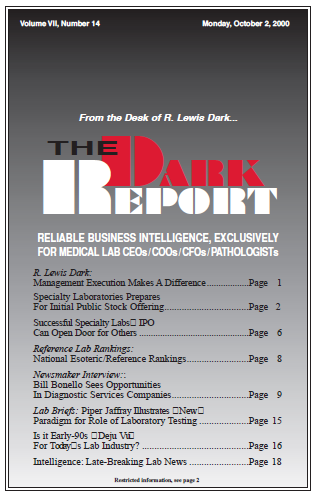CEO SUMMARY: Stock prices for laboratory and pathology companies have skyrocketed since the new decade of the 2000s dawned on January 1. Is investor optimism warranted by the opportunities ahead in diagnostic testing? Or will history repeat itself if the continuing evolution of American healthcare proves as financially unhealthy to independent lab and pathology firms […]
To access this post, you must purchase The Dark Report.


